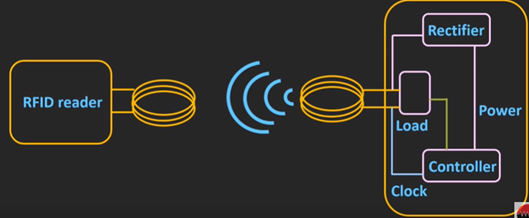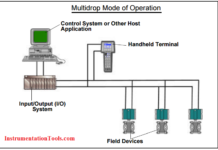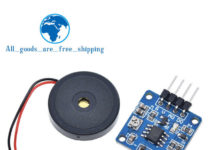What is RIFD?
RFID is a short form of Radio Frequency Identification. It is working under inductive coupling principle, based on a radio frequency or radio waves. RIFDs uses electromagnetic field to identify objective or tracking the objects automatically even 100 meters distance.
The objectives may be books, products in shopping mall, cars etc., not only a car objects it can be a used for tracking of Pet animals also. The RFID tag is used to attach to the object which we want to track. This RFID reader are designed to send the data automatically in real time. Also we can change the value in the real time.
Whenever the object is in the range of the reader, the RFID tag are used to transmit feedback signal to the reader. The RFID Contains a transmitter and receivers. So it is very similar to the technology used in bar code. In the case of the bar code the scanner should be in a line of site. RFID is a not a line of technology as far as the object is in range of the reader object is able to identify the reader and able to send the feedback signal to reader. (The object can be in random position).
By using RFID technology we can track multiple objects at the same time.
The Difference Between RFID System and Bar codes:
- Bar codes sensor should be in line with the bar codes to read the date, the distance between the sensor and bar code will be 0 to 300mm, hence bar code is having distance restriction. But, RFID tags need not be in line with the sensor unit. It can be in any random position.
- In RFID data can be updated in the real time but barcode data can not be updated in real time automatically.
- RIFD tags needs a power source or battery to power up the tags circuit, but bar codes does not need to power
- Bar code datas are having restriction such as ink condition, contrast, positions, paper damages but RIFD does not affect any of the physical condition.
What is inside RFID system?
RFID system contains two components
- RFID reader
- RFID tags
RFID tags are three type, they are
- Active tag
- Passive tag
- Semi passive tag
Active tag
In case of active tag is used to have its own power supply but transmit signal back to the reader also they depend on the own power supply.
Passive tag
The passive tag is not having its own power supply. So this passive tag depends of the radio waves which are coming from the RFID reader from the source of energy.
Semi passive tag
In semi passive type used to have an own power supply but for transmitting feedback signal back to the RFID reader they used to depend on the signal which is coming from the RFID reader.
Inside RFID reader
RFID reader is coming in many sizes and shapes. RFID reader may be handheld reader or as it may be size of door is in shopping malls.
RFID reader mainly consists of three components.
- RF signal generator
- Micro controller
- Receiver/signal detector
RF signal generator
This signal generator generates a radio wave transmitted using antenna and the same is used to receive the feedback signal coming from the tag. The RFID reader also have receiver or signal detector and process the information send by the RFID tag. This RFID have micro controller many times the RFID is directly connected to the computer.
Most of the RFID used passive tags because passive tags are quite cheaper compared to active tags as they do not required any power source and quite compact.
The passive tags are coming in many forms they are like key chain or it could be a size of credit card or it may be like label.
Basic components inside RFID tag
- Transponder
- Rectifier circuit
- Controller
- Memory
Transponder receives the radio waves which are coming from the reader which are sent the feedback signal to the reader. The passive tags do not have the own power supply so they dependent on the radio waves so they gets the energy from the radio waves.
Rectifier circuits the energy coming from the radio waves code across the capacitor. This energy used as the supply for the controller as well as the memory.
Frequency of RFID used for operations
RFID tags are operated in three frequencies. They are
- Low frequency
- High frequency
- Ultra-high frequency
Low frequency
The low frequency operates in the range of 125 KHZ to 134 KHZ. This frequency travels very short distance up to 10 cm.
High frequency
The high frequency operates in the range of 13.5 MHZ. this frequency travel up to1 meter.
Ultra-high frequency
This frequency operates from 860 to 960 MHZ. this frequency travels up to 10 to 15 meter.
Working principle
RFID depends on the frequency of operation for low frequency and high frequency operation based on the inductive coupling (near field coupling)
While in case of UHF tags working is based on the electromagnetic coupling ( far field coupling)
Low frequency and high frequency (Inductive coupling)
RFID reader continuously sends radio waves at a particular frequency. The radio waves which is send by the reader is of three purposes.
- It includes enough power into tag
- It provide synchronization clock tag to passive tag
- Acts as a carrier for return data from tag
The low and high frequency operation the RFID reader and tag are very close to each other. So working principle is based on the inductive coupling just like transformer action. The field which is generated by RFID reader is used to couple with the antenna of a RFID tag, because of the mutual coupling voltage will get induced across the coil of the RFID tag. Some portion of voltage is rectified uses a power supply for the controller and memory elements.
RFID reader sending radio waves of a particular frequency so that voltage will be induced across the coil at a particular frequency. This induced voltage is used to synchronizing the clock of the controller. Suppose if we connect load across the coil, the current will start flowing through the connected load. If we change the impedance of load, simultaneously the current flowing through load will also change (Ohms Law), suppose if we switch ON/OFF load current will also ON/OFF. The switching of current the rate of change of current also generates the voltage in as RFID reader. The switching ON/OFF the load is known as the load modulation.
Ultra-high frequency (far field coupling)
Consider in UHF, the distance between the reader and the tag is few meters so coupling between the reader and coil will be the far field coupling. RFID reader continuously sends the waves at a particular frequency towards the tag. In response, the tag is sending weak signal to RFID reader. This week signal will be sent back to RFID reader which is known as back scattered signal. The Intensity of the back scattered signal is depending upon the load matching across the coil. By changing the condition of load we can change intensity of back scattered signal. If we can change the condition of data that is stored in RFID tag then data can be send back to RFID reader. In far field coupling RFID and tag is few so initial stage signal send by reader should be strong.
Applications
- Used in institutions like library, hospitals etc,
- Transportation and logistics
- Access control
- Sports
- Animals tracking
Thumbnail Credit: https://elprocus.com









